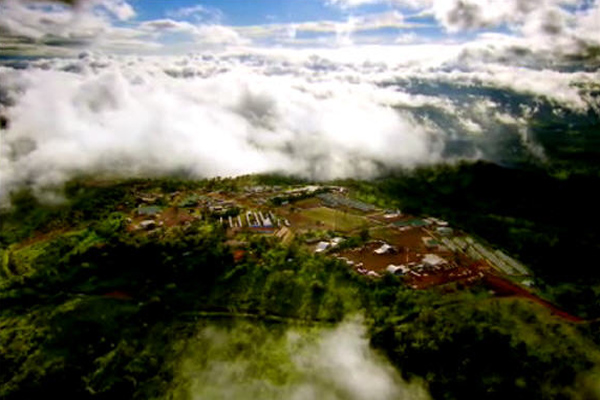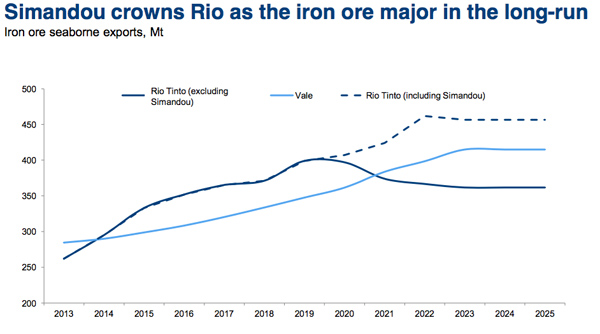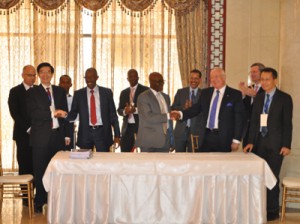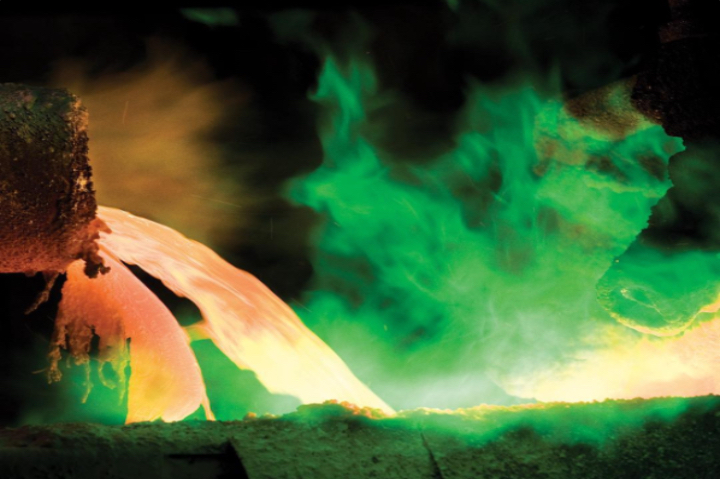Decades later $90 billion African mine still a distant dream

Source: Rio Tinto video capture
Guinea is home to some of the richest and easily exploitable iron ore fields outside of Australia’s Pilbara region and top producer Vale’s Brazilian home base.
In May last year, the Guinea government and Rio Tinto (LON:RIO) and its partners – China’s Chalco together with the World Bank – inked a game-changing $20 billion deal for the southern section of the Simandou iron deposit.
The agreement calls for a new 700km railway across the country to Conakry, Guinea’s capital in the north, plus a new deep water port at a conservatively estimated cost of $7 billion; infrastructure investments that will transform the economy of the impoverished country.
Simandou with 1.6 billion tonnes of reserves and some of the highest grades in the industry (66% – 68% Fe which attracts premium pricing) has a back-of-the-envelope calculation value of more than $90 billion at today’s prices.
At full production Rio’s Simandou concession would export up to 95 million tonnes per year – that’s a third of Rio’s total capacity at the moment – and would catapult Rio past Vale as world number one. Simandou would by itself be the world’s fifth-largest producer behind Australia’s Fortescue Metals and BHP Billiton.
Rio acquired the rights for the vast mountain deposit more than 15 years ago and has already spent more than $3 billion building open pits. A feasibility study was due to be completed by July, but the ebola outbreak halted work at the site for months with hundreds of contract workers pulling out of the country.

But with the price of the steelmaking raw material languishing not far off decade lows below $50 a tonne hit in July and global mining companies in belt-tightening and cost cutting mode even projects like Simandou are being placed on the backburner.
Bloomberg quotes Cece Noramou, the government official overseeing the infrastructure project as saying Rio is “giving us the runaround. We’re running out of patience. We can’t spend our whole lives without any development”:
President Alpha Conde’s government is considering what mining policy to pursue, he told reporters Aug. 27 in the capital, Conakry. “There have been people at Simandou for 15 years, 20 years, and they’ve never produced a tonne of iron,” he said. Conde’s taking a new tender for another part of the deposit slowly because “we don’t want our minerals to be put out to pasture anymore,” he said.
There is little incentive for Rio to speed up development of Simandou with the global iron ore market in oversupply, Chinese demand moderating and its mines in Australia producing at full tilt (and enjoying the fattest margins in the industry).
And whether Guinea really has leverage to make the Anglo-Australian giant shift focus from existing operations is an open question. Even at the current development clip, it’s highly unlikely Simandou will ship ore before 2020.
Glencore was said to be eyeing the Simandou North deposit, but in the year since high-level representatives of Glencore travelled to Conakry to meet with government officials, the financial situation of the Swiss commodities trader and miner has been turned on its head. Anglo American at the time also said it has no plans to take on a project of this size.
Simandou’s history is a chequered one. Rio Tinto held the licence for the entire deposit, but was stripped of the northern blocks in 2008 by a former dictator of the country.
BSG Resources, a company associated with Israeli diamond billionaire Beny Steinmetz acquired the concession later that year after spending $160 million exploring the property.
In 2010 BSGR sold 51% to Vale (NYSE:VALE) for $2.5 billion. The Rio de Janeiro-based company stopped paying after the first $500 million after missing a number of development milestones. Then the new Guinean government under Conde launched a review of all mining contracts awarded under previous regimes and launched an investigation into the Vale-BSGR joint venture.
The Guinea government withdrew the mining permit in April, accusing BSGR of obtaining its rights through corruption. BSGR has denied wrongdoing and filed an arbitration request in an attempt to win compensation from the Western African nation.
Shortly after BSGR’s rights were stripped Rio Tinto filed a lawsuit for billions of dollars against both Vale and BSGR in New York courts for what it called a “steal” of its previously-owned concession. Rio alleges BSGR paid a $200 million bribe to Guinea’s former minister using funds from Vale’s initial payment.

Source: CRU – May 2014
SEE ALSO: Mining lawsuit of the century just got a lot uglier
{{ commodity.name }}
{{ post.title }}
{{ post.date }}





2 Comments
Matt
When a country has known reserves in the ground and they are not being exploited during a slump….they should be happy. I could never understand the theory that you have to mine at all costs. The better course is to develop properly and slowly, get the ESIA correct, and be ready to exploit in the next upturn.
Ocke
The sensible solution would be to make some arrangements with ArcelorMittal and connect to the old LAMCO rail instead of paving a new railroad through the jungle. Make it double track and ship out from the port of Buchanan after some improvements. However, I can imagine the government of Guinea becoming a little grumpy when most of the infrastructure investments land in neighboring Liberia. But I wouldn’t hurry too much considering the current markets..